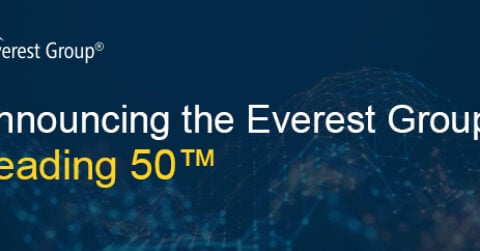Cloud services, innovative delivery models helping some service providers grow at the expense of others.
DALLAS, February 7, 2014 — Infrastructure services providers who hope to grow their business in the European market will have to do so by taking a bite out of their competition, according to a just-released research report from Everest Group, an advisory and research firm on global services.
The report, “European Infrastructure Services – Service Provider Landscape with PEAK Matrix™ Assessment 2014,” predicts that growth in the infrastructure space will remain muted, with zero to one percent gains projected for the next four years.
New competitive landscapes will continue to evolve as service providers respond to buyers’ increasing demand to curb IT spending and increase business agility. In particular, three trends will continue to cause significant disruptions in the market: increasing adoption of Remote Infrastructure Management (RIM) models popularized by offshore-centric players, expanded use of cloud computing, and the emergence of third-party Service Integration and Management (SIAM) models.
In addition to providing insight into the market size and growth of the European infrastructure industry as a whole, the report assesses the capabilities and market success of 21 IT service providers that offer Europe-focused infrastructure services. Everest Group’s proprietary PEAK Matrix ranks each provider as a leader, major contender or emerging player, using metrics related to the service provider’s scale, scope, technology/domain investments, delivery footprint, and resultant market success.
“The entrenched leaders in the European infrastructure market have broad capabilities across industries and typically have a large local delivery presence. However, they will face strong competition going forward,” said Chirajeet Sengupta, practice director at Everest Group. “Others will chip away at their positions by strengthening their own delivery capabilities and by offering new service models more attractive to buyers.
“However, it’s a buyer’s market, with all the pressures that entails,” adds Sengupta. “Buyers expect service providers to drive up productivity levels and deploy next-generation technologies, all while controlling costs.”







